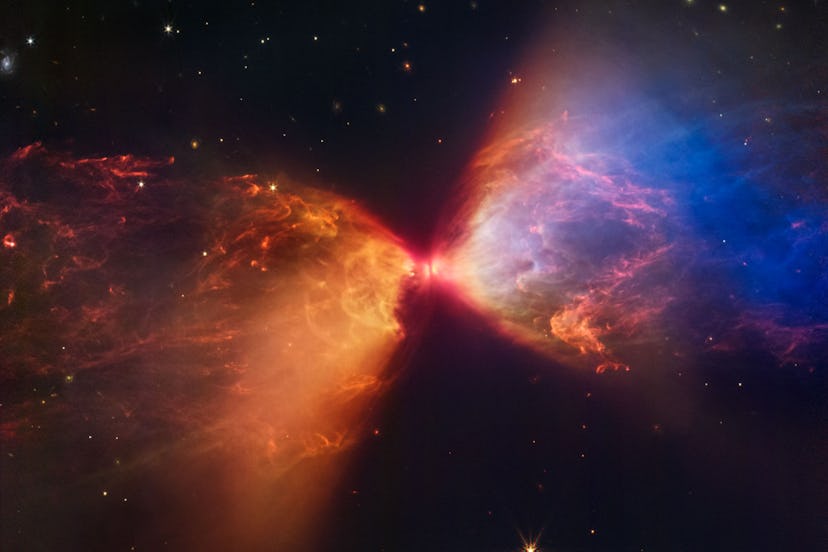JWST Photo Of A Star Being Born Is An Astounding, Hour-Glass Shaped View
NASA has released a new photo that was taken with the help of the James Webb Space Telescope (JWST) showing the early stages of a star being born.

NASA has released a new photo that was taken with the help of the James Webb Space Telescope (JWST) and it’s just as stunning as others that have been released in recent weeks. In the new photo, the high-tech telescope captured the birth of a star, and it’s more incredible than we could imagine. Vibrant colors that range from yellows and oranges to purples and blues that shoot out of a center point make this photo one of the telescope’s best.
Can You Explain What Is Happening In The Photo Like I’m 5?
According to NASA, this gorgeous photo shows the birth of a star, more specifically, a protostar called L1527. This protostar is approximately 100,000 years old, which sounds ancient in our world, but it’s actually nothing in terms of time in space.
But what’s actually happening here? The blue and orange clouds were captured through the telescope’s infrared capabilities and show material that’s shooting away from the protostar and colliding with the surrounding matter.
The colors we see result from the dust between the protostar and the telescope. The blue hues represent where the dust is the thinnest and the reds and oranges show where there is a thicker layer of dust.
“The surrounding molecular cloud is made up of dense dust and gas being drawn to the center, where the protostar resides,” NASA explains. “As the material falls in, it spirals around the center. This creates a dense disk of material, known as an accretion disk, which feeds material to the protostar.”
The more mass the protostar collects, the higher its temperature raises, eventually resulting in nuclear fusion — the final stage that will turn the protostar into a star.
The image isn’t only stunning for those of us who like bright pretty pictures but capturing this allows scientists an early look at the process of our sun and solar system.